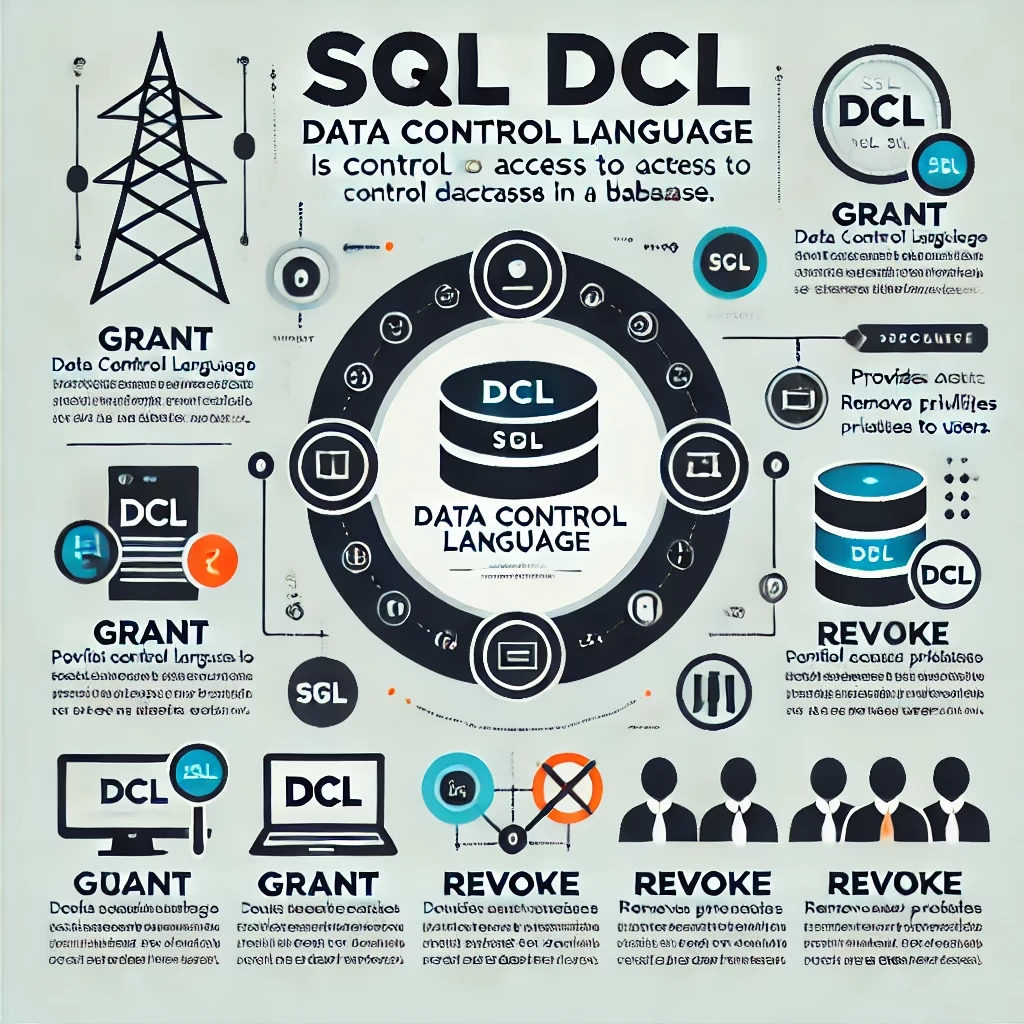Data Control Language (DCL) is a part of SQL (Structured Query Language). It controls access to data in a database. It ensures database security by granting or revoking permissions to users or roles. DCL plays a vital role in safeguarding sensitive information and managing user privileges within a database environment.
In this, we’ll explore the concept, purpose, and syntax of DCL commands, along with examples to show its usage.
What is Data Control Language (DCL)?
DCL focuses on defining user access and permissions in a database system. Database administrators (DBAs) control who can access specific database objects. They decide what operations users are allowed to perform. This is critical for maintaining data security and ensuring compliance with organizational policies.
Key Features of DCL:
- Access Control: DCL regulates user access to database objects.
- Security: Protects sensitive data by limiting unauthorized access.
- Role Management: Enables the assignment of roles and responsibilities.
- Flexibility: Allows for fine-grained control over database privileges.

Common DCL Commands and Syntax
There are two primary DCL commands: GRANT and REVOKE. These commands allow administrators to grant or revoke permissions to users or roles.
1. GRANT
The GRANT command provides specific privileges to users or roles on database objects like tables, views, or procedures.
Syntax:
GRANT privilege(s) ON object TO user [WITH GRANT OPTION];Parameters:privilege(s): The type of access being granted (e.g., SELECT, INSERT, UPDATE, DELETE).object: The database object on which the privilege is granted.user: The user or role receiving the privilege.WITH GRANT OPTION: Allows the user to further grant the specified privileges to others.
Example:
GRANT SELECT, INSERT ON employees TO user1;2. REVOKE
The REVOKE command removes earlier granted privileges from a user or role.
Syntax:
REVOKE privilege(s) ON object FROM user;Parameters:
privilege(s): The type of access being revoked (e.g., SELECT, INSERT, UPDATE, DELETE).object: The database object from which the privilege is revoked.user: The user or role losing the privilege
Example:
REVOKE INSERT ON employees FROM user1;Common Privileges in DCL
- SELECT: Grants permission to read data from a table.
- INSERT: Allows inserting new rows into a table.
- UPDATE: Permits modifying existing data in a table.
- DELETE: Enables deleting rows from a table.
- EXECUTE: Grants the ability to execute stored procedures or functions.
Use Cases of DCL
- Database Security: DCL ensures only authorized users can access sensitive data.
- Access Management: Helps manage user roles and privileges across multiple database objects.
- Compliance: Supports regulatory compliance by restricting unauthorized data access.
- Collaboration: Enables controlled collaboration by granting specific permissions to different teams or users.
Key Considerations When Using DCL
- Granularity: Privileges can be granted at different levels, like database, table, or column.
- Audit Trail: Track privilege changes to guarantee accountability and compliance.
- Least Privilege Principle: Grant the least necessary privileges to users.
- Role-Based Access Control: Use roles for easier privilege management across multiple users.





